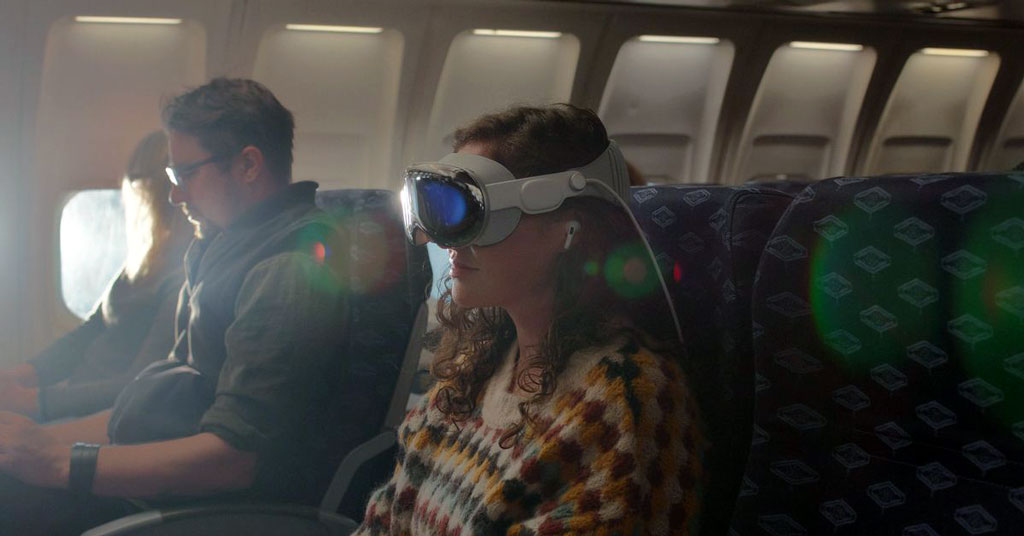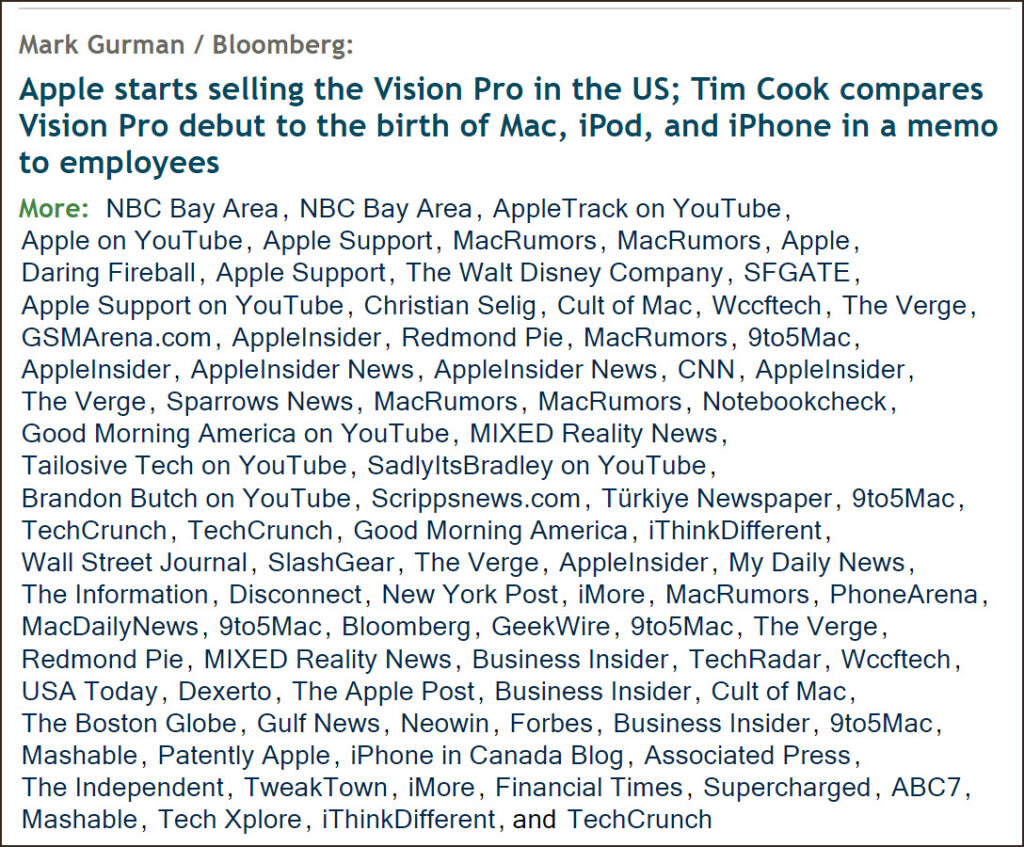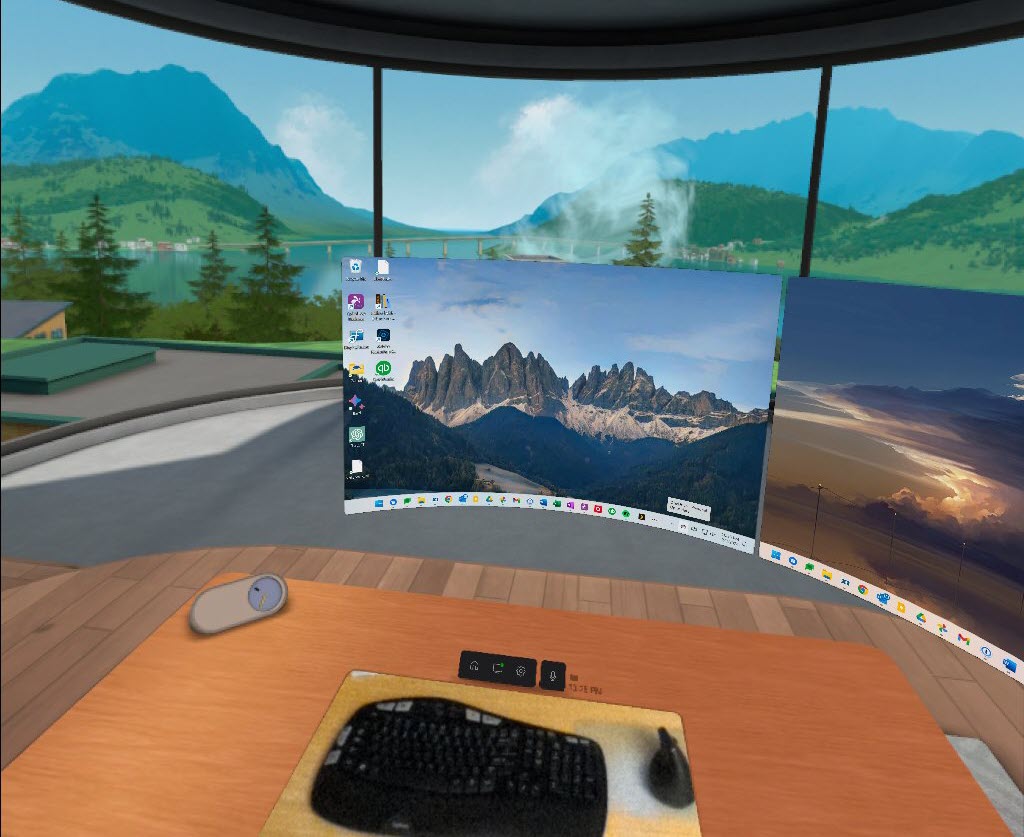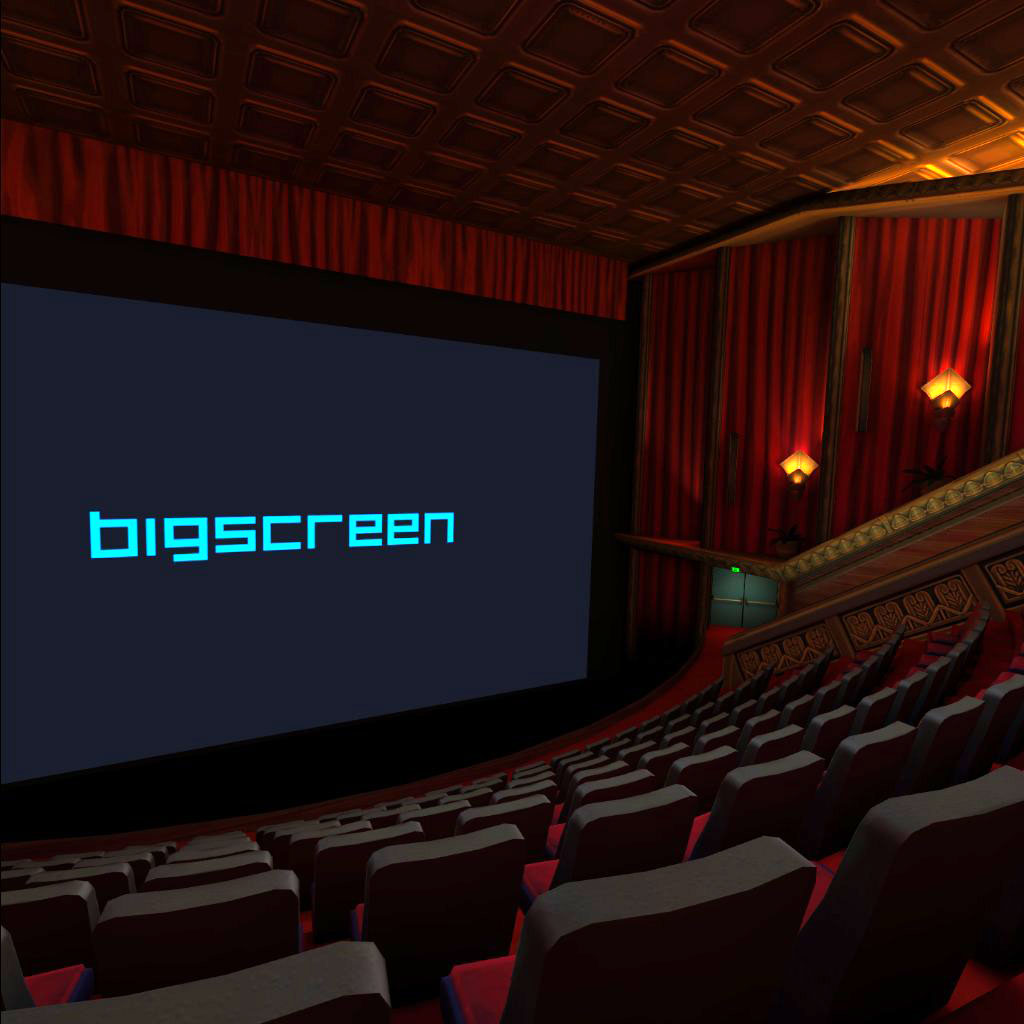
Apple began delivering Vision Pro headsets to reviewers and customers last week. By all accounts, they’re quite nice VR devices.
Oops! Apple doesn’t want Vision Pro to be called a “virtual reality” device. It’s trying to kickstart a new market and leave old baggage behind. Many people have already made up their minds: “VR” equals “device that I don’t want to use.” Apple doesn’t want to get tangled up in those preconceptions. Vision Pro has the computing power of a MacBook and in Apple’s dreams people will use it instead of a laptop, so Apple insists that everyone use its term “spatial computing.”
Except, well. Vision Pro is a VR headset. It straps to your head and seals your eyes. You can turn on its cameras and see your surroundings or you can turn off the outside world and be immersed in alternate landscapes. You can run apps in floating windows.
That’s exactly what it’s like to use a Quest 3 or Quest Pro VR headset. Vision Pro isn’t an innovation outside of Apple’s reality distortion field.
And that doesn’t matter! No one can argue with Apple’s reality distortion field. It’s one of the fundamental forces governing all interactions in the universe, like gravity and electromagnetism and procrastination. Apple has proven that over and over. Remember what I said two years ago?
“Apple’s open embrace of augmented reality will bring awareness to the world. That’s what happens when Apple enters a market. It’s just fine if it takes a few years to refine a new Apple product and turn it into a mass market item.”
So: spatial computing! Everyone is talking about it. This is the list of links to news coverage on TechMeme on February 3, the day after the Vision Pro went on sale.

I don’t have a Vision Pro, you don’t have a Vision Pro, but if all this hubbub makes you curious, you can get a Quest 3 for $500. And maybe you should! They’re great. If you’re a gamer, it’s a golden age; VR games for Quest 3 like Asgards Wrath 2 and Assassins Creed Nexus VR are true AAA games that can stand proudly next to the best flatscreen games instead of being pitied stepchildren. Maybe you’ll try Supernatural for exercise or Tripp for meditation. It’s all good.
I use my Quest Pro to get work done and watch movies. Let me describe what I’m doing in case it helps you decide if this is for you.
The first thing you need to know is: I’m comfortable in this gear. The weight of the Quest Pro is evenly distributed and it’s held away from the front of the face. I can wear it for hours and I don’t get headaches and I don’t get motion sick. The Quest 3 is lighter and also comfortable, although a little front weighted. Apple put all the weight of Vision Pro in the front so almost every review calls out that it starts to seem heavy quickly. Apple will almost certainly redesign the straps or move some weight to the back in the next generation.
Physical comfort is the first hurdle that you must clear and it’s a tough one to predict. For what it’s worth the optical improvements in the latest generation devices strongly reduce the incidence of motion sickness. The odds are more in your favor now.
I got prescription lenses from VR Optician. Highly recommended – neither Quest headset is comfortable worn over glasses. They’re inexpensive and easy to pop in and out. Apple requires custom lenses for Vision Pro.
When I’m working, I sit at my desk in front of my computer and open Horizon Workrooms, the Quest business app. It was designed for meetings but so far businesses haven‘t adopted it. Microsoft just rolled out Teams Mesh, its own version of a Quest VR app for business meetings. It might not get much use either. These are baby steps on the long, long road to business use of VR/AR.

I’m a writer and I don’t have meetings. The first thing you see when you start Horizon Workrooms is a workspace for individual use. That’s where I spend hours every day. I’m sitting at a window in front of a lake as I write this – simple graphics but very peaceful.
Horizon Workrooms connects to Quest Remote Desktop, a background app running on my computer, and displays my computer monitors in large screens side by side directly in front of me. My regular monitors are each 27 inches; the virtual monitors appear to be 50 inches or so, at about the same distance in front of me. I can open a third virtual monitor with a click, so now I’ve got three 50” displays wrapped around me.
The remote desktop app does not demand much from the computer; I can do the same thing from my Thinkpad or MacBook Air laptops. Take a moment to think about that. I can sit at my dining room table or in the living room or anywhere I’ve brought the Quest Pro and my laptop, and I can open three huge screens and work.
There is a “passthrough” window that uses the cameras to display my real keyboard and mouse on the desk. You can see it in the above screenshot. I can see my hands on the keyboard; the clarity is sufficient to recognize the keys.
Horizon Workrooms is perfect for my work. I can’t move or resize the screens, which is fine for me but makes some people irritable. Another Quest VR app, Immersed, permits more screens to be displayed simultaneously with the freedom to drag them all over the place. I thought the Immersed interface was cluttered and fiddling with the displays did not make me feel joy but hey, try it, everybody is different.
The virtual displays in Horizon Workrooms are crisp and clear for the work I do but there is enough lag that they can’t be used for games or movies.

If I’m near my computer, I watch movies on the Quest with Bigscreen, a VR app that connects to the computer with its own remote desktop app. It appears I’m sitting in an Imax theater with banked rows of seats like the above picture, or I can switch to a conventional theater or any of 15 or 20 other environments. My sons put on their Quest 3 headsets and join me from their living rooms and we watch movies together and chat. In that scenario, what we’re seeing is my computer display blown up to the size of an Imax screen. We can watch anything I can display on the computer. Copyright protection keeps rearing its head; when I’m running Netflix or Hulu in Chrome, sometimes the Chrome screen is black in the headsets and I have to switch to Firefox, which usually bypasses the protection. Sigh.
Bigscreen is not the only option for watching movies, of course. Quest has built-in apps for Netflix and Amazon Prime Video. Each one puts you in a theater with a large screen for stand-alone individual viewing, nothing required except a wi-fi connection. The built-in Quest web browser works for Max and Hulu. So far all of them have remembered my credentials so there’s been a minimum of fussing with passwords.
The Quest Pro battery lasts about the length of a movie. That’s also about my comfort level. When I’m done, I have a band across my forehead that makes it appear I had difficult brain surgery, but I’m otherwise happy.
If you’re in the Bay Area or New York City, you’ll see people wearing Vision Pro in public places – the first TikTok videos are already turning up. If you travel, you’ll see Vision Pro and Quest 3 headsets on planes, a natural place to enjoy watching a movie on a huge screen.
Tech journalist Nick Bilton wrote a long article praising Vision Pro for Vanity Fair. “This was as far from a VR headset as a kid’s Schwinn bicycle is from a Gulfstream G800 private jet. . . . ‘I think it’s not evolutionary; it’s revolutionary,’ director James Cameron said to me when I told him about my experience. ‘And I’m speaking as someone who has worked in VR for 18 years.’”
Hyperbolic? Maybe. Let’s wait five or ten years before we decide. Bilton ends his article with something I’ve already noticed: after using VR for a while, other devices have started to feel flat and boring. My two 27” monitors seem confining, the big TV in the family room is unsatisfying compared to that IMAX screen.
That’s why I can’t dismiss Bilton’s vision of an AR future.
“In the same way that I can’t imagine driving a car without a stereo, in the same way I can’t imagine not having a phone to communicate with people or take pictures of my children, in the same way I can’t imagine trying to work without a computer, I can see a day when we all can’t imagine living without an augmented reality. When we’re enveloped more and more by technology, to the point that we crave these glasses like a drug, like we crave our iPhones today but with more desire for the dopamine hit this resolution of AR can deliver.”
Vision Pro headsets are selling better than expected and Quest 3 sales are spiking upwards because Apple is normalizing VR. Try a Quest 3! It’s more than just games.
